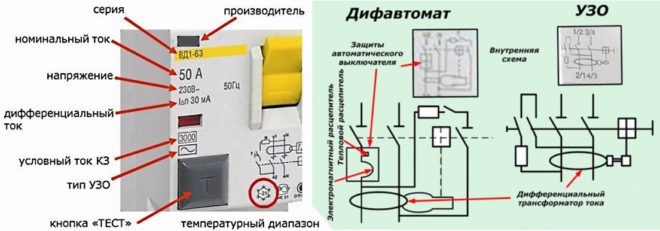What is the difference between an RCD and a differential machine?
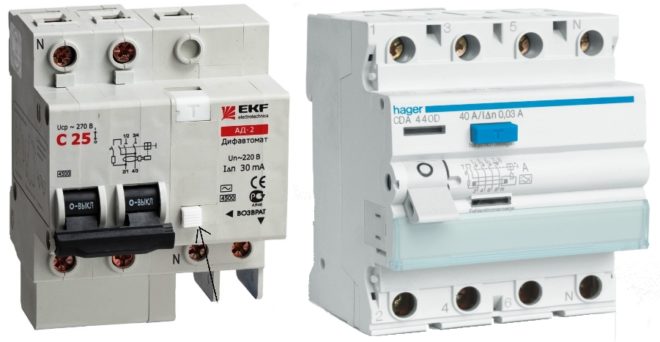
Most people are not very well versed in the types of protective devices for the electrical network, so they often do not understand what the difference is between them. In fact, these devices are designed to solve different problems, and therefore to know how they differ and what function they perform, even an ordinary resident needs to know - at least in general terms. RCDs are often confused with a differential circuit breaker. After reading the article presented to your attention, you will find out what is the difference between an RCD and a difavtomat, and you can also understand when and which of these devices is better to install.
Content
- RCD and differential machine: tasks performed
- The difference in appearance of an RCD from a differential machine
- RCD and differential machine: the difference in marking
- The difference between devices on the wiring diagram
- Abbreviation on the case
- RCD and differential AV: which of these devices to choose?
- Conclusion
RCD and differential machine: tasks performed
If you put an RCD and a difavtomat next to it, their similarity will be immediately noticeable. Indeed, such devices are easily confused. But they perform different tasks. The RCD protects people and pets from electric shock - this is its only function. If the power line or any of the devices connected to it are damaged, a leakage current may appear in the circuit. Touching such wiring can result in a strong electrical shock.

In addition, an electrical leak can cause the insulation to overheat and then melt, which often leads to a fire. Installing an RCD will solve this problem - when a leakage current is detected, it will trip, and the circuit will turn off. After troubleshooting, the machine can be turned on again.
However, this device does not provide protection against all potential cable troubles. Protecting the line from leaks, it does not react to overloads or short-circuit currents. To avoid these problems, it should only be installed together with a circuit breaker. Another option is to connect a differential machine to the mains instead of the RCD.
The difference between the devices is clearly shown in the video:
First, let's explain what a difavtomat is. This is the name of a protective device that is capable of simultaneously performing the work of an RCD and AB. Thus, he will be able to save the line from any possible violations (current leakage, short circuit, overvoltage). Simply put, this is a conventional circuit breaker for an electrical network with an RCD that is part of it.
The residual current device itself can be compared to a leakage indicator, which will show whether electricity is flowing to consumers or out. There is a leak - the RCD is triggered and de-energizes the network.
If it is not, the device will not notice any overloads or short circuits. Therefore, if you are thinking about what you still need - an RCD or a difavtomat, and do not know what to choose to protect the home line, then remember: the first is not a self-sufficient device and is not installed in the line without a circuit breaker. The difavtomat itself can protect the network from the problems described above and does not need additional equipment.
The difference in appearance of an RCD from a differential machine
Determine which device is in front of you - an RCD or a differential. automatic - quite easily, even visually. Despite the external resemblance (the switch lever, the presence of the "Test" button, the same body part with the diagram printed on it, as well as numbers and letters), look closely enough to see that the designations on these devices are different. We will talk about this below. And it is even easier to determine whether an RCD or a difavtomat is in front of you, by the location of the "Test" button and switch.For RCBOs, the lever is on the left, the button is on the right, but for the RCD it is the other way around. This can be clearly seen in the above photograph.

RCD and differential machine: the difference in marking
The next question: how to distinguish an RCD from a difavtomat by one of the signs - the marking applied to its body part.
On the surface of the RCD, the rated current is indicated exclusively by numbers. The Latin letter (B, C, D) in front of them is an integral sign of RCBO.
Let's take another look at the above photo. On the body part of the RCD is marked "16A". It means that the rated current in the circuit in which this device is connected should not exceed 16A. RCBOs designed for the same rated current are marked "C16". The letter denotes the characteristic of the built-in releases.
Several ways to distinguish an RCD from a difavtomat in a video:
The difference between devices on the wiring diagram
The diagram is applied to many devices. When looking at the RCD or at the differential. the automaton, you will notice that the schemes applied to them are similar, but not identical. There is an oval on the VD diagram - this symbol indicates a differential transformer, which is the main part of the device. It is responsible for detecting leakage current. The distinguishing symbols on the RCBO diagram include the designation of the release devices - an electromagnetic solenoid and a bimetallic plate, which ensure the operation of the machine when short-circuit currents or overloads appear in the circuit.
There are no trip symbols on the residual current device.
Abbreviation on the case
Since manufacturers know that ordinary people are often confused about these devices, many of them put the corresponding abbreviations on the side of the case. The residual current device corresponds to the letters VD (differential circuit breaker), the technical abbreviation of the difavtomat is RCBO (which means - differential current circuit breaker).
This feature allows you to accurately understand what a particular device is - an RCD or a differential machine. Unfortunately, such designations are found only on devices from Russian manufacturers, imported devices do not have this marking.
RCD and differential AV: which of these devices to choose?
So, what is the difference between an RCD and a difavtomat, we figured it out. Now let's move on to a question that is often asked on forums: "What is better - an RCD or a differential?" Indeed, given that the RCBO is two devices in a complex, it provides reliable protection of the network from leaks, overloads and short-circuit overcurrents, while not requiring additional devices, we can come to the conclusion that in any case it is necessary to install a difavtomat.
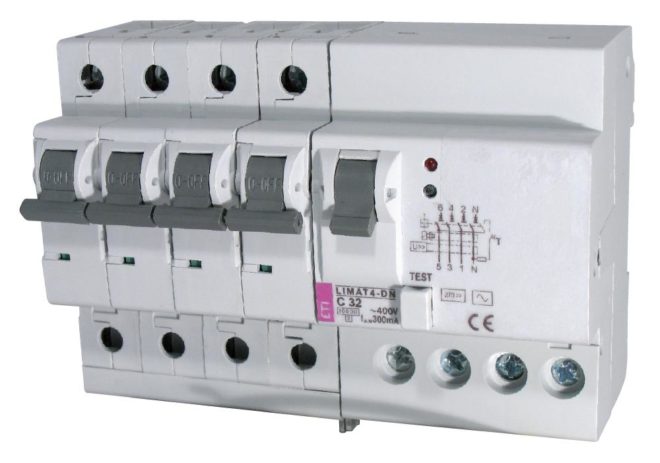
But it is not so. Let's figure it out in more detail.
In terms of price, a RCBO is more expensive than a residual current device. However, the total cost of an RCD and AB is higher than that of a differential circuit breaker. In this regard, buying the latter is more profitable.
In terms of the reliability of operation, these devices are the same. Only devices from different manufacturers can differ. Russian-made devices cannot be called bad, but nevertheless they are inferior to most foreign counterparts in response time, and the quality of the material from which the body part of domestic products is made is worse. Naturally, the price of imported devices is higher than that of those produced in Russia.
Now let's talk about the disadvantages inherent in RCBOs as a combined device. If the RCD and the circuit breaker are installed separately, then in case of malfunctions in the circuit, one of them is triggered: with a leak - HP, and with an overload or short circuit - AB. This makes troubleshooting much easier. If the difavtomat worked, then you will have to spend a lot of time to find out the reason for its shutdown.True, taking into account this feature, some modern RCBO models are equipped with actuation indicators that allow you to establish what caused the device to shut down.
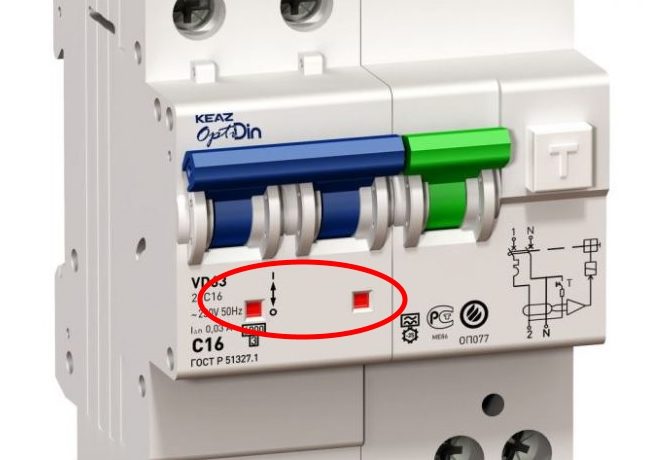
Another possible nuisance is breakdown. Any equipment can break, protective devices are no exception. If one of the devices in the RCD-AB chain fails, replacing it will be cheaper than installing a new difavtomat. In this case, one of the parts of the RCBO may become unusable, and the entire device will have to be replaced. Therefore, when choosing between these devices, you need to take into account the stability of the network and the risk of possible malfunctions.
As for the ease of installation, the RCBO in this regard is preferable - it is easier and faster to install it in the switchboard than two devices.
Possible errors when connecting RCDs and difavtomats in the video:
Conclusion
In this material, we figured out what an RCD and a differential AV are, what are the features of their functioning, and also how the VD differs from an automaton (differential). Remember that when choosing an RCD or difavtomat in order to protect the network, you need to pay attention to the parameters of the protected line. For example, in an apartment or a small private house, you can install both a residual current device separately from AB and RCBO - there is no fundamental difference in this.
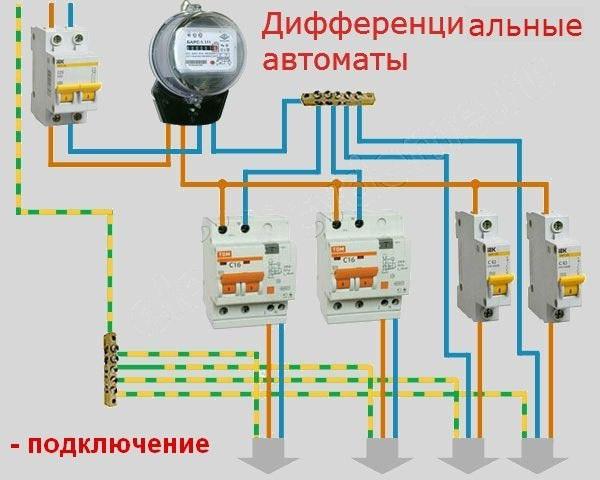
As for large buildings with a large number of loads (for example, cottages with boiler rooms and utility units), it is better to give preference to a differential machine.


